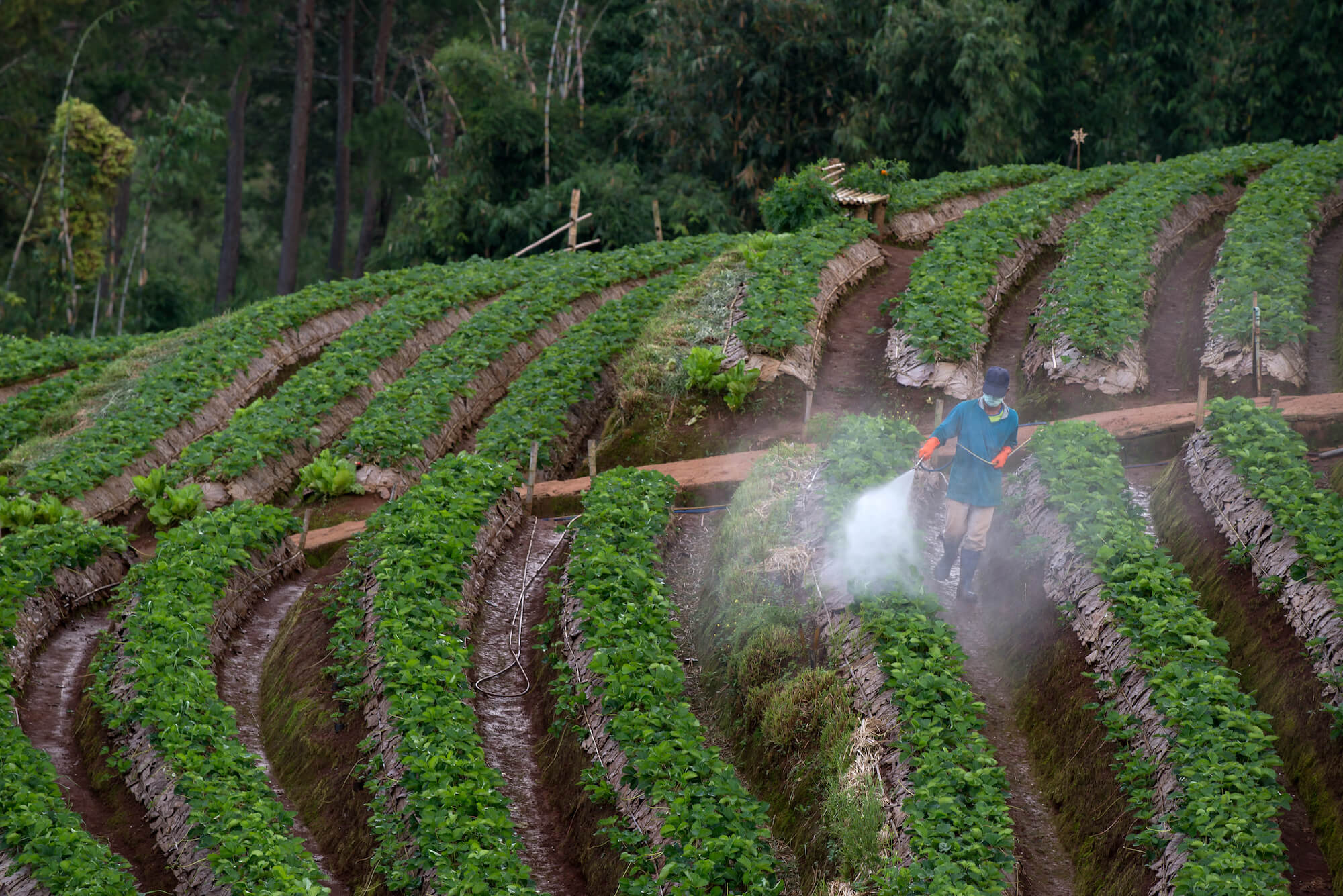In today's blog post we look at biopesticides, their benefits and challenges, and why they are becoming increasingly popular among conventional growers as well as organic producers.
Biopesticides, otherwise known as biological pesticides, are pest management agents and chemicals derived from natural sources such as bacteria, fungi, viruses, plants, animals and minerals.
Conventional pesticides are generally synthetic materials that directly kill or inactivate the pest. Biopesticides, by contrast, are virtually non-toxic and may function by disrupting or interfering with mating, such as in the case of insect sex pheromones, or various plant extracts which serve as insect attractants used with traps.
Plant-Incorporated Protectants are plants that double as a form of biopesticide. They occur when genes for specific pesticidal proteins are inserted into plants, causing them to produce a biopesticide inside its own tissue. Both the protein and its genetic material are regulated by the EPA in the U.S. and the CFIA in Canada; the plant itself needs approval in Canada but is not regulated in some jurisdictions.
It is important to note that not all naturally-derived products are considered biopesticides - natural products that act on the nervous system of pests are still classified by the U.S. Environmental Protection Agency (EPA) as chemical pesticides. In Canada, the PMRA classifies naturally-derived neurotoxic pesticides as chemical pesticides or biopesticides on a case-by-case basis.
Long since used by organic growers, who are prohibited by their own self-regulatory bodies from using synthetic pesticides to control pest populations, biopesticides are now enjoying increased popularity among conventional growers. The use of biopesticides in U.S. agriculture more than quadrupled from 900,000 pounds of active ingredient applied in 2000 to 4.1 million pounds in 2012.
Partly responsible for this is the promotion of biopesticides by the EPA, which favours the way they usually target a specific pest without releasing toxins and leaving residues that could potentially threaten other forms of life - including humans, pets, other animals, and biological pest control agents (natural enemies) - and the environment.
Also responsible is the increased development and availability of biopesticides. Biopesticides must be approved by the EPA or PMRA or their international counterparts just like synthetic pesticides, but the process from discovery to first placement in the market is about 4 years in the U.S. The process for synthetic pesticides, on the other hand, takes an average of about 11 years and (needless to say) is far more cost-prohibitive.
Many growers choose to use biopesticides in tandem with higher-risk synthetic pesticides as part of Integrated Pest Management (IPM) programs. While synthetic pesticides are called upon for quick solutions, biopesticides are brought in as a more sustainable, long-term form of pest management. Dr. Anissa Poleatewich, Research Scientist in Plant Pathology at Vineland Research, notes that in combination with other strategies, biopesticides enact "measureable improvements in pest control, water management and crop yields."
Biopesticides create little to no toxic residues. Many biopesticides are "residue-exempt" and consequently are not required to be routinely monitored by regulatory authorities or retailers. The toxic residues created by synthetic pesticides pose occasional trade impediments for export crops, so many conventional growers choose to incorporate biopesticides in order to reduce residues and open up opportunities in foreign markets.
Another property making biopesticides attractive to conventional growers is their lack of re-entry intervals (REIs). Due to their non-toxic composition, most biopesticides do not require REIs. This may consequently improve a farm's productivity, as fields need not sit empty for extended periods of time.
Biopesticides are especially helpful to greenhouse growers. "[Biopesticides] offer several advantages in greenhouse culture where protection of bio-control agents is extremely important," says crop protection expert Craig Hunter. "Their directed activity often allows co-existence in the greenhouse while still controlling key pests."
However, because they contain organic material, biopesticides have reduced shelf lives compared to synthetic pesticides. Additionally, because they are often pest-specific, a certain amount of education on the agent and target pest is required on the grower's part in order to achieve the most effective results. Many are also susceptible to breakdown from ultra-violet light and so are short lived in the field.
Working alongside synthetic pesticides and natural enemies, biopesticides can be an effective tool in modern horticulture's arsenal to produce higher crop yields and enhance crop quality. Their ability to enact these benefits at lower human and environmental risk will likely make them increasingly popular among conventional and organic growers alike into the future. "In the field, bio-pesticides like B.t. [Bacillus thuringiensis, a soil-dwelling bacterium harnessed for its insecticidal properties] have been used for decades," says Hunter. "Newer products can be used in rotational programs with conventional products as another means of resistance management. For certain uses, they can stand shoulder to shoulder with existing products. As re-evaluation diminishes options for pest management, bio-pesticides will assume even more prominence down the road."
Croptracker allows growers to record and schedule applications of all market pesticides, including biopesticides. Need a refresher on any of Croptracker's features? Head over to our Knowledge Base, where you'll find step-by-step tutorials as well as common troubleshooting tips and more. And as always, if you're ever stuck, never hesitate to e-mail us at support@croptracker.com or Live Chat with us by clicking the green speech bubble ![]() in your bottom right-hand corner. We're always happy to help you let Croptracker make your farm become more efficient, safe, and profitable!
in your bottom right-hand corner. We're always happy to help you let Croptracker make your farm become more efficient, safe, and profitable!
| Missed Last Week's Blog Post? Empowering Female Growers |


